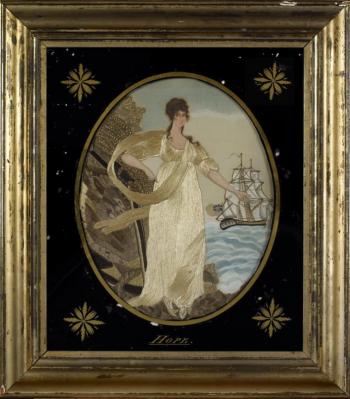Collector to explain significance of early Maine schoolgirl art
Samplers, silk embroideries, watercolors and furniture created by young women in 18th and early 19th century America were often made in the classrooms and were often the first — and sometimes only — step in a girl’s education. Collector Bill Gemmill will focus on examples of Maine schoolgirl art in a winter lecture series talk sponsored by Lincoln County Historical Association at 1 p.m. on Sunday, Feb. 14 in the Communications Building behind the County Court House in Wiscasset.
While many of the schoolmistresses and the locations of their early American classrooms have gone unrecorded, schoolgirl art is usually signed, dated, and even sometimes inscribed with the names of the towns in which they were created. For this reason, they serve as historic documents, attesting to the existence of colonial education for women.
Bill and his wife Sally have been collecting schoolgirl art for more than 25 years. In his talk, Bill will focus on examples made in Maine from 1800 to 1840. He will discuss their artistic merit and iconography and the unique features that distinguish them as Maine work.
Admission to the winter lecture series is free. A donation of $5 is suggested. Coffee and pastries will be served. For more information about the lecture, call Christine Hopf-Lovette at 207-522-6397.
The Lincoln County Historical Association is an all-volunteer non-profit organization that provides stewardship for the 1754 Chapman-Hall House in Damariscotta, the 1761 Pownalborough Court House in Dresden, and the 1811 Old Jail and Museum in Wiscasset. For a complete listing of 2015 Winter Lecture Series presentations, please visit www.lincolncountyhistory.org.





























